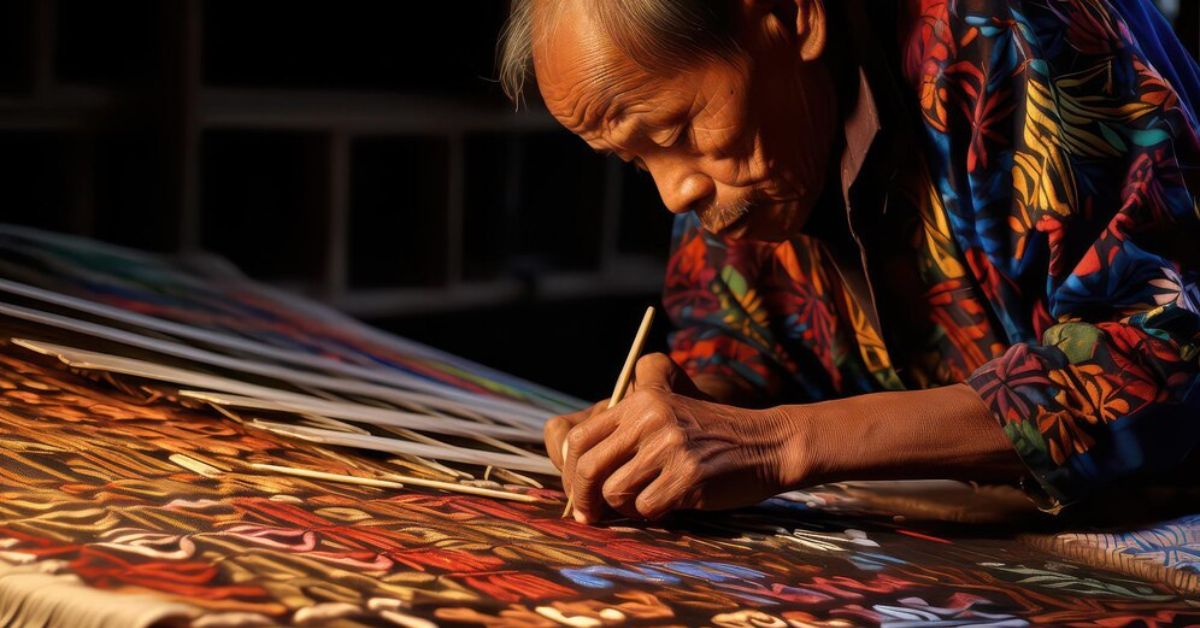Tissariss: The Hidden Gem of Modern Artistry
As an exceptional blend of the modern with the ancient, Tissariss stands out. By fusing modern processes with the spirit of traditional weaving, this dynamic art form produces works that are at once classic and cutting-edge.
Tissariss, a hidden gem that has eluded the general public, invites artists and aficionados to discover its one-of-a-kind goods. Skilful artistry is on full display in each piece, which has a myriad of colors, patterns, and textures that convey stories with strong cultural roots.
Entering this realm of craftsmanship will reveal not only stunning textiles but also a motivating community committed to the art form’s further development and preservation. If you’re looking for genuine art, Tissariss is the place to go.
The traditional art of weaving in Tissariss
Tissariss is proud of its centuries-long weaving tradition. Each piece is one-of-a-kind due to the stories told by the elaborate patterns and vivid colors. Tissariss weaving is more than simply making cloth; it’s a way of expressing one’s unique personality.
The enduring practices of artisans are a reflection of their cultural and geographical ties to the area. A tapestry is a work of art, and the care and attention to detail shown by the weavers is evident in every thread.
Durability and aesthetics are both boosted by the use of traditional materials, such as fibers obtained from nearby areas. Because of this dedication to detail, Tissariss weaving will always be a cherished art form, esteemed for both its aesthetic and cultural significance.
Techniques and Materials Used in Tissariss Art
Combining old and new methods is what makes tissariss art so special. Through the expert use of handlooms, artisans weave elaborate designs that convey historical narratives. Devotion to detail that has been refined through many generations is evident in every item.
The materials used are just as varied. The terrain is characterized by natural fibers that offer a rainbow of colors and textures: cotton, silk, and wool. These natural elements not only make the artworks last longer, but they also make them seem better.
Tissariss designs that include contemporary features are becoming more and more prevalent. Synthetic threads and innovative dyeing techniques keep traditional techniques alive while opening them to new creative possibilities. The limits of Tissaris’ artwork are being pushed deeper into current realms by this synthesis.
The Significance of Tissariss Art in Culture and Tradition
Tissariss art holds a special place in the cultural heritage of its region. It reflects the community’s heritage, principles, and anecdotes handed down from one generation to another. The narratives told by each weaved piece help to keep alive customs that might otherwise be lost.
Not only are the colors and patterns visually appealing, but they also have historical value. The significance of each motif is steeped in local tradition and mythology. A sense of community pride is nurtured via this link to the past.
Additionally, Tissariss weaving promotes unity throughout communities. Craftspeople are united in their pursuit of excellence, which fosters camaraderie and encourages the exchange of ideas. Participation in creative projects brings people together, regardless of their origins, and enhances their shared cultural heritage.
Incorporating modern techniques in Tissariss weaving
Tissariss weaving has been revitalized by modern technology. The use of computer-aided design (CAD) software has opened up new possibilities for artists, who can now create complex patterns that were previously impossible. Modern preferences are satisfied by this new style, which is the result of combining old and modern elements.
Modern Tissariss art also places a strong emphasis on sustainable approaches. To maintain their craft’s relevance in today’s eco-conscious society, weavers are utilizing eco-friendly materials at an increasing rate. This change encourages conscientious consumption while also protecting the craftsmanship.
Today, in the sphere of Tissariss, collaboration is vital. Weavers may reach a wider audience that values both traditional and modern workmanship by teaming up with interior designers and fashion designers to exhibit their work.
Famous Tissariss Artists and their Masterpieces
Exceptional painters beautify Tissariss, giving life to their masterpieces. Anaya Rahman is one such artist; her contemporary takes on traditional themes are renowned. Vibrant colors and delicate patterns frequently serve as narrative devices in her works.
Ravi Kumar is another well-known artist who has made a name for himself with his groundbreaking weaving methods. Collectors adore his work because it encapsulates tradition while still satisfying contemporary tastes.
One thing that makes Maya Joshi’s Tissari designs stand out is the way she uses eco-friendly materials. Her breathtaking tapestries highlight eco-conscious artistry while reflecting cultural relevance.
Tissariss weaving in the fashion industry
By fusing traditional techniques with modern aesthetics, tissariss weaving has established itself as a distinct subset of the fashion business. Its luxurious textures and vivid colors are attracting more and more designers, who are using it in their high-end collections.
Garments and accessories made with Tissariss methods communicate stories of heritage while appealing to current sensibilities; this is how fashion firms create their work. Fashion shows would not be the same without this art form, which captivates onlookers with its elaborate decorations.
Tissariss weaving is also loved by eco-conscious fashionistas because of the care and use of local resources. This age-old method is still influencing the dynamic fashion industry of today, which caters to customers’ need for genuine experiences.
Preserving and promoting the art of Tissariss weaving
Craftspeople and members of the community must work together to ensure the continued existence of Tissaris’s weaving. In order to preserve this lovely art form for future generations, educational seminars can introduce them to it.
Local displays are particularly important for displaying the elaborate patterns and tales that are included into each sculpture. Both residents and guests are able to express their gratitude through these activities.
Tissaris’s can reach new heights on a worldwide scale through partnerships with fashion designers. Contemporary artists revitalize their trade by fusing classic techniques with current styles, appealing to a wide range of consumers that appreciate cultural history in contemporary settings.
Conclusion:
At the crossroads of history and contemporary, Tissariss captivates art lovers with its one-of-a-kind allure. This kind of weaving is an art form in and of itself, but it also has the power to convey stories that will last for centuries. The varied cultural history that went into making each item is evident in every stitch.
As it develops further, Tissaris’s incorporates modern elements while staying true to its heritage. The artists are taking traditional traditions and giving them a modern twist by trying out new materials and methods.
Tissaris’s has a bright future ahead of it thanks to the support of the fashion industry and skilled artisans. By fostering these relationships, Tissaris’s can reach more people and make sure its legacy lasts.
FAQS
What is Tissariss?
Tissariss is a type of traditional weaving that incorporates both modern and traditional techniques.
How did Tissariss originate?
Traditional Tissaris’s have their roots in long-ago rituals that have been passed down through many generations and which frequently mirror folklore and cultural norms from different parts of the world.
Who are some notable artists in the field of Tissariss?
Renowned artists such as [insert artist names here] have made significant contributions to this age-old art form via their groundbreaking work.
Is Tissariss used in fashion today?
Yes, a lot of designers combine modern aesthetics with traditional workmanship by including Tissaris’s into their designs.
How can one learn about or engage with the art of Tissar iss?
Learning the ins and outs of this fascinating art form has never been easier than with the help of workshops and online classes.







